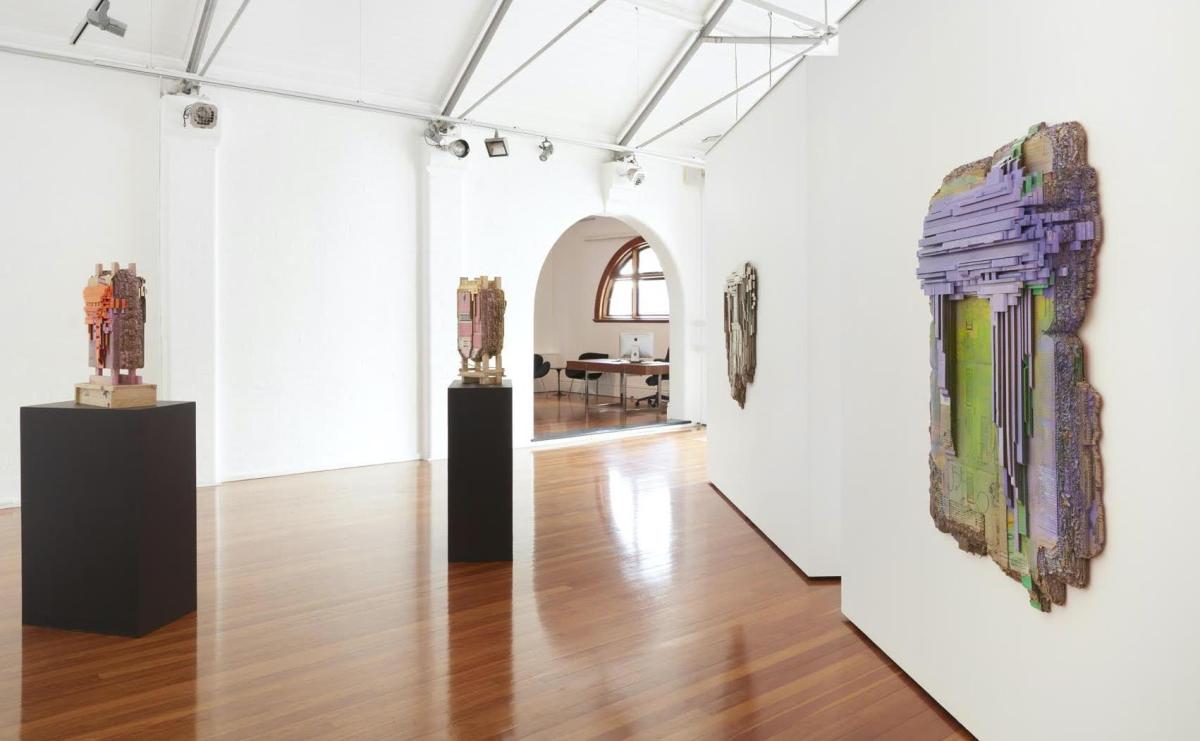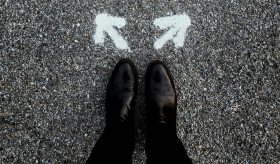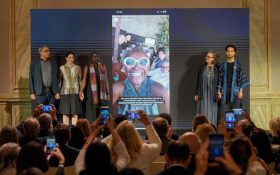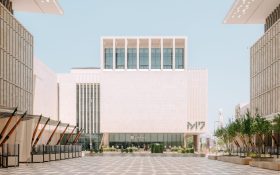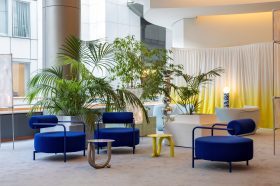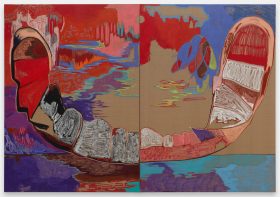‘Yes and no,’ said Artereal Gallery’s associate director Rhianna Walcott about whether she misses pre-COVID exhibition openings. She’s not the only one.
‘Exhibition openings are a lot of work,’ says Raft Artspace’s director Dallas Gold. ‘It was good to have a break.’
Love them or loathe them, openings seemed like an irreplaceable part of the mechanics of the art world. They played many roles beyond sales, including celebrating artists’ achievements and building communities and relationships.
Gallerists have coped in different ways with restrictions on physical gatherings over the past year. Artereal now stages additional online-only exhibitions, holds small events just for artists and their friends and family, and has just added VIP preview days for by-appointment private views. COVID-19 has reframed how the Sydney gallery sees exhibition openings.
‘We miss the atmosphere and sense of celebration and…meeting new collectors and forming new friendships. But at the same time, the last year has taught us that these nights are not essential to our business model,’ Walcott said.
‘…last year has taught us that these [opening] nights are not essential to our business model.’
Rhianna Walcot, Artereal Gallery
Others have swung the other way. ‘I used to complain about them, and the cost and what a pain they were,’ says Andy Dinan, the director of Melbourne’s MARS Gallery.
MARS’ openings sometimes got 200 to 400, with crowds spilling onto the street. They could be a headache. ‘I realised during COVID-19 how much everyone loves them,’ she said, pointing to the warm messages and feedback she received from people. ‘I had not expected that kind of support…I learned that all layers of the community own MARS – not just me.’
Dinan is now running exhibition openings again, but by RSVP only in half-hour blocks to be COVID-safe. Over the past year, Dinan has also began posting casual artist interviews on social media, and what she calls ‘live crosses’ from opening events for those unable to make it in person.
Across the country, other galleries have also been experimenting with how they share and promote new exhibitions online.
Melbourne’s Nicholas Thompson Gallery has been producing artist interview videos. Sydney’s Sullivan+Strumpf launched a podcast and print and online magazine. Raft has been filming short exhibition walk-through videos for Instagram, which give a taste of the scale of works and how an exhibition is installed.
‘I think this is one area in which the art world is still experimenting and finding new ways of doing things,’ said Walcott. ‘Nothing replaces in person connection.’
True connection
Connection, of course, can be about much more than marketing. Raft works with a number of Aboriginal-owned community art centres.
‘Openings at RAFT often have been a forum for Aboriginal artists to make strong statements, [and] also an opportunity for people to meet artists from remote communities,’ said Gold. ‘I think it is almost impossible to replicate the interaction that happens when people meet at openings.’
Raft is now hosting smaller and less frequent openings, though Gold said they lack the same buzz. Being in Alice Springs, the gallery is in a different position to many. ‘The bulk of sales are collectors who do not physically experience the exhibitions, so our preparation for shows has not changed much from pre-COVID times,’ he says.
While he’s been watching what other galleries have been experimenting with, he’s not yet convinced that new technologies like virtual reality or 3D walk-throughs are worth the investment just yet, or that ‘any digital installation mock-up will convey how a painting or object operates in the flesh’.
He does, however, plan to continue recording exhibition videos with the use of a gimbal, and to be diligent about installation photographs.
At Artereal, Walcott said she’s found FaceTime another easily available technology that has been helpful with some clients. Beyond that, ‘we will definitely continue with our online exhibition programming and may continue to invest in videography,’ she said.
Gold predicts we will see more artist video interviews being recorded by Australian galleries. ‘Artists will develop their own following and the role of galleries will change – there will be more reliance on social media platforms,’ he said.
Changing in step with other sectors
In some ways, this increased interest in social media and content marketing tracks with developments in other sectors. Content marketing can be democratising, but in saturated marketplaces, the results can also favour those with the most time and money to invest.
A new study coming out of RMIT’s digital ethnography research centre has already identified a growing ‘digital divide’ among cultural institutions. The study looked at ARIs, council- and university-run galleries, as well as state and national institutions. Commercial galleries were not included, however key findings seem just as applicable: that digital activities are now part of everyday operations; and that digital content creation requires specialist abilities that are not evenly distributed.
Read: ARIs and the challenge of online existence during COVID
This is likely to be more of an issue overseas, where there is more of a gulf between small gallery businesses and mega-chains producing magazines like Gagosian Quarterly (print and online) and Ursula (online only). Locally so far, slick production values seem less of a focus than immediacy, and the insights that can come from artists speaking directly about their work or sharing studio images.
Like Dinan, Raft has received very positive feedback from online audiences over the past year. Gold puts some of this engagement down to people having ‘more time to look’.
‘We did not think we were doing anything different than what we have been doing the past 20 years. We will just keep trying to respond to what is happening around us, and have shows that have integrity, and hope that they generate interest,’ he says, pointing back to artists as what really matters.
Gallerists seem quietly confident that, whatever role exhibitions might play in future, the audiences are there. As Gold said: ‘Art in all its forms makes even more sense in these challenging times.’
